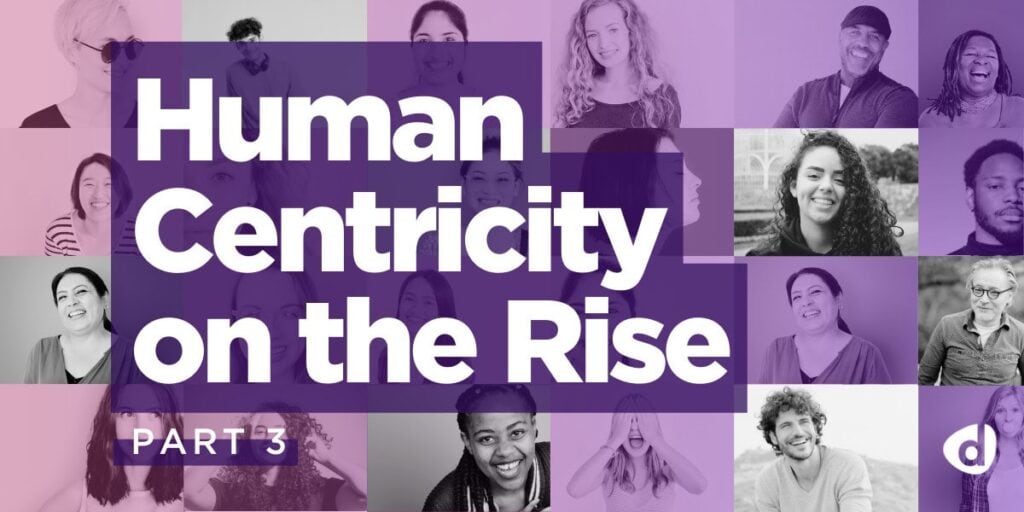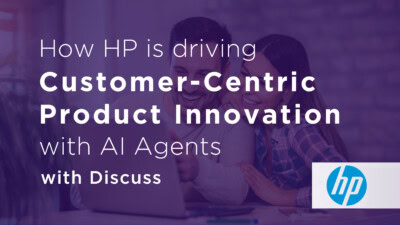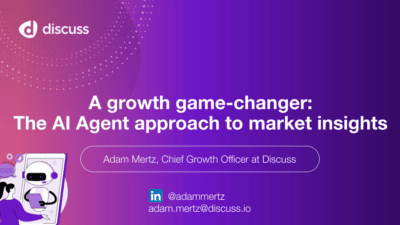Make Products People Love: Top 5 Ways to Build a Customer-Centric Product Development Cycle

Enhancing Innovation through Customer-Centric Product Development
In an effort to create products that people love, many product managers are independently running research projects—yet without a strong focus on customer-centric product development, these efforts can fall short. While well intentioned, without a customer-centric approach, they risk fixating on specific product questions, rather than accelerating innovation through a deeper understanding of what consumers truly want. A customer-centric methodology ensures that every step of the process is aligned with consumer needs.
This “product-centric” approach is hurting businesses because it doesn’t incorporate or consider consumer desires, leads to disjointed explorations that extend development cycles and ultimately results in products that people don’t want.
In this new era, customer centricity is the key to unlocking access to the consumer for ALL. With this approach, everyone in your organization – from insights teams to product teams to C-suite executives – is making strategic business decisions with the consumer in mind.
In this blog, we’ll share five ways that insights teams can support the creation of a successful, customer-centric product development cycle.
1. Set your product managers up to effectively connect with the right audience.
Product managers often need a helping hand when it comes to conducting consumer interviews. Insights teams can be their secret weapon. Building a foundation for connecting with the right audience will set your product managers up for success.
- Define the audience or personas.
Ensure your product managers’ research strategy isn’t a guessing game. Develop detailed customer profiles or personas to help product managers pinpoint the right people to talk to. - Make the program easy and scalable for sign-ups. Avoid ‘ad hoc’ models where a Statement of Work (SOW) or a Purchase Order (PO) is required with each step. The program should be an ‘always on’ model that makes it easy to run projects quickly and at scale.
2. Teach by example by coordinating ‘best practice’ sessions.
Just like teaching a child to use scissors, you can’t expect product managers to be expert interviewers right away. Let them learn by watching. Organize sessions where product managers can observe experienced researchers in action. This hands-on approach will help them understand best practices and build confidence in their own abilities.
3. Engage customers at every stage of the product development for customer-centric decisions
A customer-centric approach to product development ensures that consumer feedback shapes every stage of the process. Here are some examples of how to integrate consumer voices at each stage:
Kick-Off:
During product ideation, conduct online face-to-face live interviews to uncover key problems and challenges. Use this feedback as your “north star” to shape your product to meet these needs.
Discovery:
Better understand consumer motivations through live interviews or asynchronous activities like video captures of tasks to gain ethnographic understanding. Bonus tip! Use GenAI to quickly extract and share key insights from the interviews with your product development team to inform your decisions.
Build:
Test prototypes and concepts using asynchronous activities to share images of your prototype or live interviews with tools like mobile screen sharing, whiteboarding, or polling to gather in-depth feedback.
Post-launch follow up:
Validate if your product is meeting your consumers’ needs or if there are opportunities for further improvement through user interview connects and asynchronous activities. For example you might leverage in-home usage tests to better understand the customer experience and ways to refine your product even more.
By embedding customer-centric insights across the entire product development lifecycle, you ensure your product meets your consumers’ needs and exceeds their expectations.
4. Consider a cadence to your customer-centric product development approach.
Establishing a structured cadence for your customer-centric program will enhance its efficiency and effectiveness by allowing product teams to get familiar with the consistent rhythm and enabling insight leaders to measure progress along the way.
Consider dedicating the 3rd week of every month or the 1st week of every quarter to “Customer-Centric Connects.” Here’s a sample cadence you might choose to follow:
- Week 1: Recruit target audience.
- Week 2: Craft discussion guides and prepare for the interviews.
- Week 3: Conduct interviews.
- Week 4: Share findings, key takeaways and insights.
5. Work with a partner that makes it easy for your product managers to be successful.
Look for a partner that offers a simple, easy-to-use platform for managing research from start to finish. Choose a partner that:
- Coordinates logistics: Taking care of screening, qualifying, scheduling, and conducting tech checks for interview respondents.
- Provides live tech support: Provides assistance during sessions to avoid technical issues.
- Offers key features to aid exploration, including:
- Built-in discussion guides
- Whiteboarding or prototype-sharing
- Mobile access for respondents
- Real-time tagging of key moments
- Dedicated back room for observers and moderators with private backroom chat
- Is browser-based: Eliminating the need for product managers to download additional applications to conduct interviews or access insights.
- Makes it easy to capture, share and analyze key findings:
- “Key Moment” clips that can be compiled into highlight reels
- GenAI-powered tools that quickly extract summaries, themes, and quotes
- Collaborative space where interviews and insights can be easily shared across the product team.
Conclusion
We are in a new era. Consumers are changing. People are more complex than ever before. Relying solely on data to make product decisions is outdated.
We need to understand people more deeply. PepsiCo, for example, has evolved to focus on making things people want, not just trying to make people want their products.
To succeed, businesses need to not only understand their consumers, but embed their voices, perspectives, needs, and desires throughout all of their strategic decisions, and especially in the creation of their products.
Talk to an expert at Discuss to learn how you can drive customer centricity at scale to make better informed business decisions.
Ready to unlock human-centric market insights?
Related Articles

Why Your Business Needs a Multicultural Marketing Strategy
A recent Ad Age article highlights a notable trend that some companies are taking a stand to keep DEI at…
A recent Ad Age article highlights a notable trend that some companies are taking a stand to keep DEI at…

Human Centricity on the Rise: Navigating the New Era, Part 3
How to unlock human centricity at scale with a key mindset shift In Part 1 of this blog series, I…
How to unlock human centricity at scale with a key mindset shift In Part 1 of this blog series, I…

3 Ways to Design for Empathy & Human Centricity
By Adam Mertz, Chief Growth Officer at Discuss Introduction I recently had the opportunity to moderate a compelling discussion between…
By Adam Mertz, Chief Growth Officer at Discuss Introduction I recently had the opportunity to moderate a compelling discussion between…



